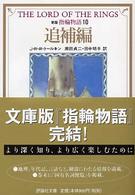Full Description
The Heritage, Creativity and Innovation Nexus: Critical Approaches and Interdisciplinary Perspectives explores the central role that innovation and creativity play in contemporary heritage practices.
Drawing on a rich body of in-depth case-studies from around the world, the editors and authors interrogate the shifting connections between heritage, creativity and innovation. Presenting cutting-edge theoretical discussions written by leading experts, the volume explores the practices and significance of the creativity, innovation and heritage nexus from a critical, interdisciplinary perspective. It interrogates key dimensions of the nexus, such as the creative economy and new digital technologies, as well as creative uses in politics, identity construction and the framing of history. It also explores a set of connected and complementary concepts and forms of creative agency that are often taken for granted. Cross-cutting features of the book involve critical conversations about power, identity and socio-historical context. Geographically, the book covers cases from Asia, Europe, the Middle East and Africa.
The Heritage, Creativity and Innovation Nexus: Critical Approaches and Interdisciplinary Perspectives is essential reading for academics and students of Heritage Studies, Museum Studies, History, Anthropology, Sociology, Urban Studies, Political Science, Archaeology, Art History and Architecture. It will also be of interest to professional practitioners working in heritage and the creative industries.
Contents
List of figures; List of contributors; Chapter 1 The heritage creativity and innovation nexus: an introduction; Chapter 2 Crafting the artisan: creativity and heritage in the performative production of persons and objects; Chapter 3 Putting People First: creatively rethinking & refashioning approaches to post-trauma recovery & conservation of architectural heritage; Chapter 4 Embodiment and creativity in Chinese Martial Arts Heritage: The Baji System at the crossroad between tradition, modern sport and national policies; Chapter 5 Indian translocated Buddhist sculpture and the decolonial potential of cultural digital twins; Chapter 6 Bath Abbey and Authenticity: the role of the replica and the voicefulness of historic surfaces; Chapter 7 Intangible cultural heritage and the market: Rethinking concepts of authenticity, repertoire and innovation; Chapter 8 Mega-events and the creative use of cultural heritage: the Beijing 2022 Winter Olympic Games; Chapter 9 The difficult conversion of an industrial town nostalgic for its past into a creative city; Chapter 10 Cultural heritage and identity building in current China: Stateholder creativity and administrative legacy; Chapter 11 Creativity and Innovation in Heritage Bureaucracy: Avalanche Risk Management as Intangible Cultural Heritage in Switzerland; Chapter 12 Paradigm shifts of Cold War Heritage: The story of Suurpea Naval Base, cultural spaces and creative heritage approaches in Lahemaa National Park, Estonia; Chapter 13 Governance creativity and indigenous rights: insights from indigenous activism in the World Heritage arena; Index.





